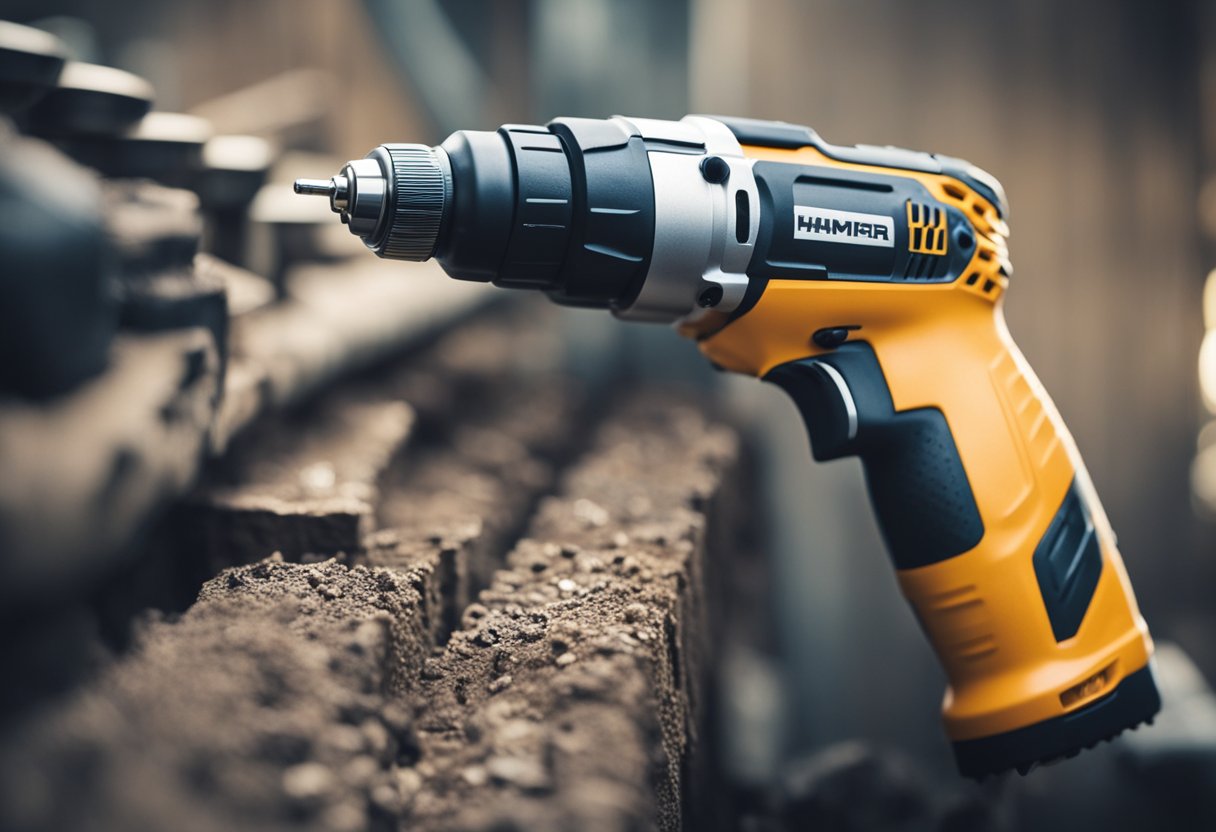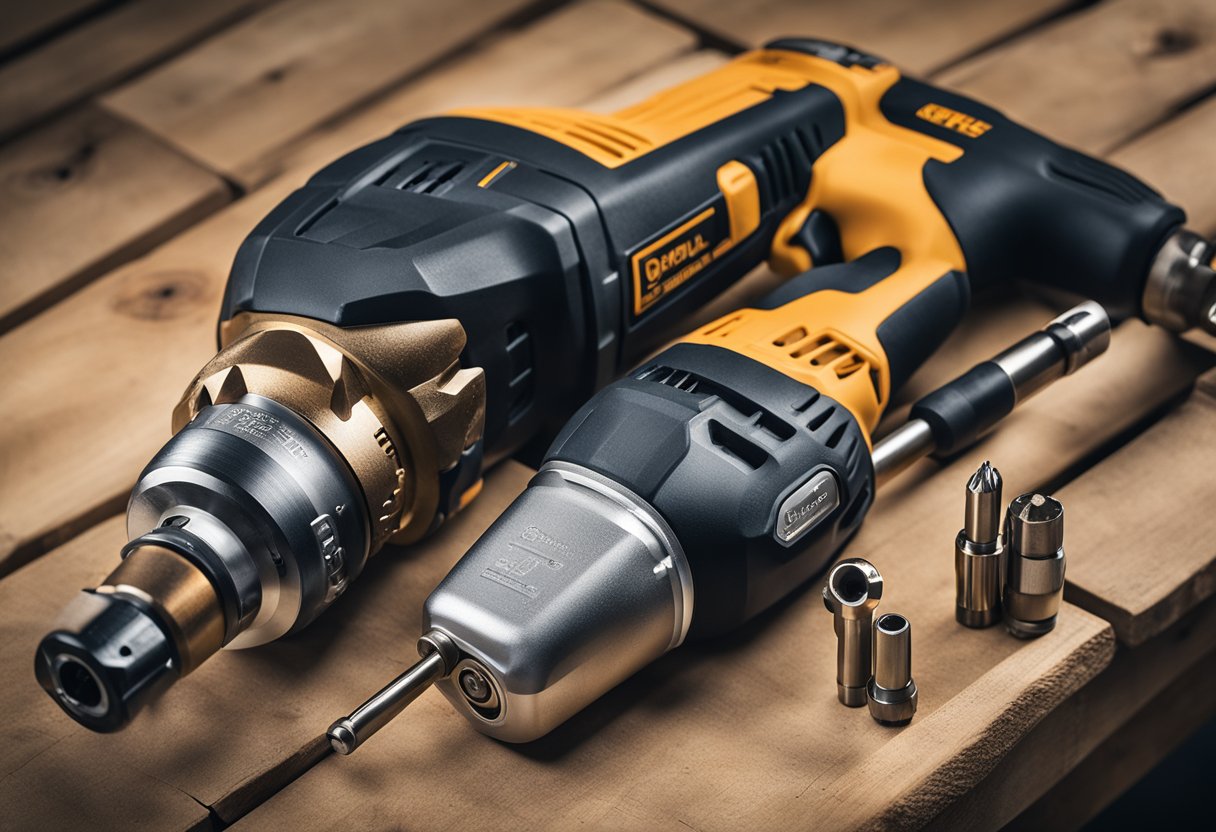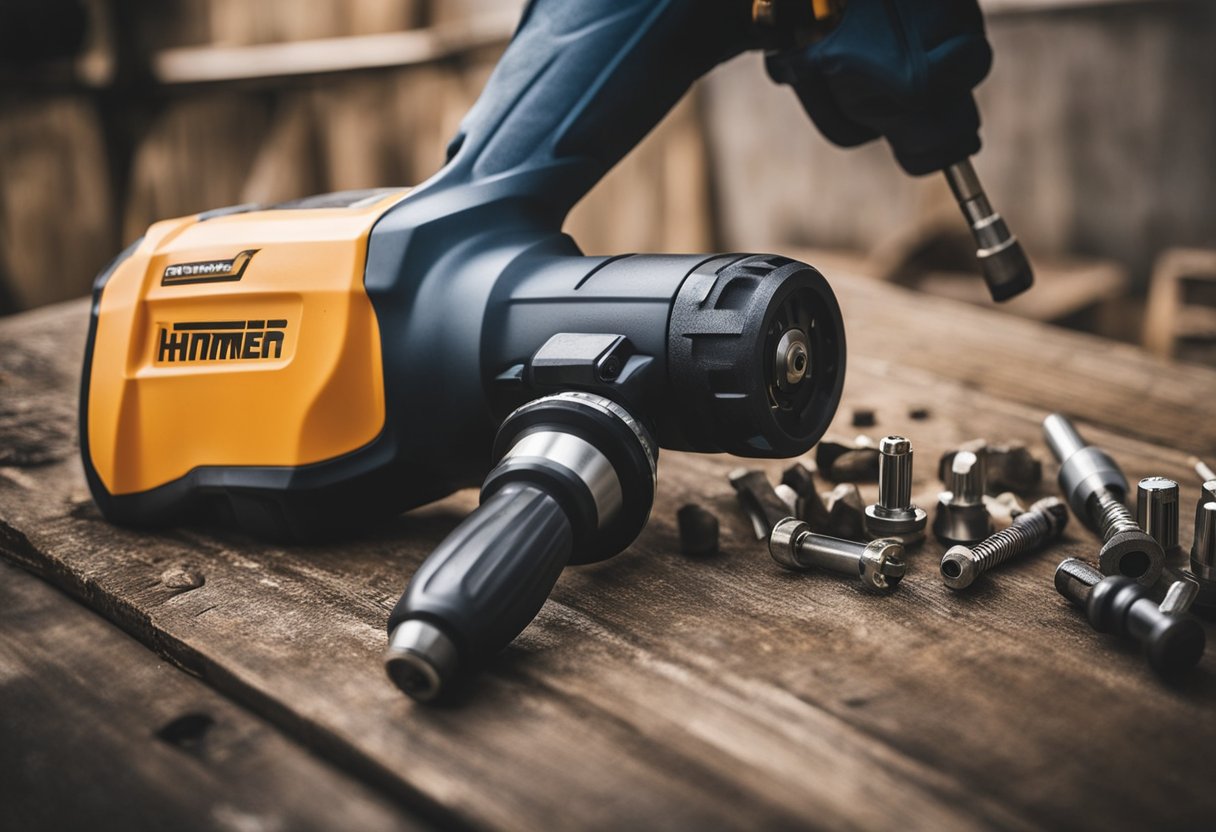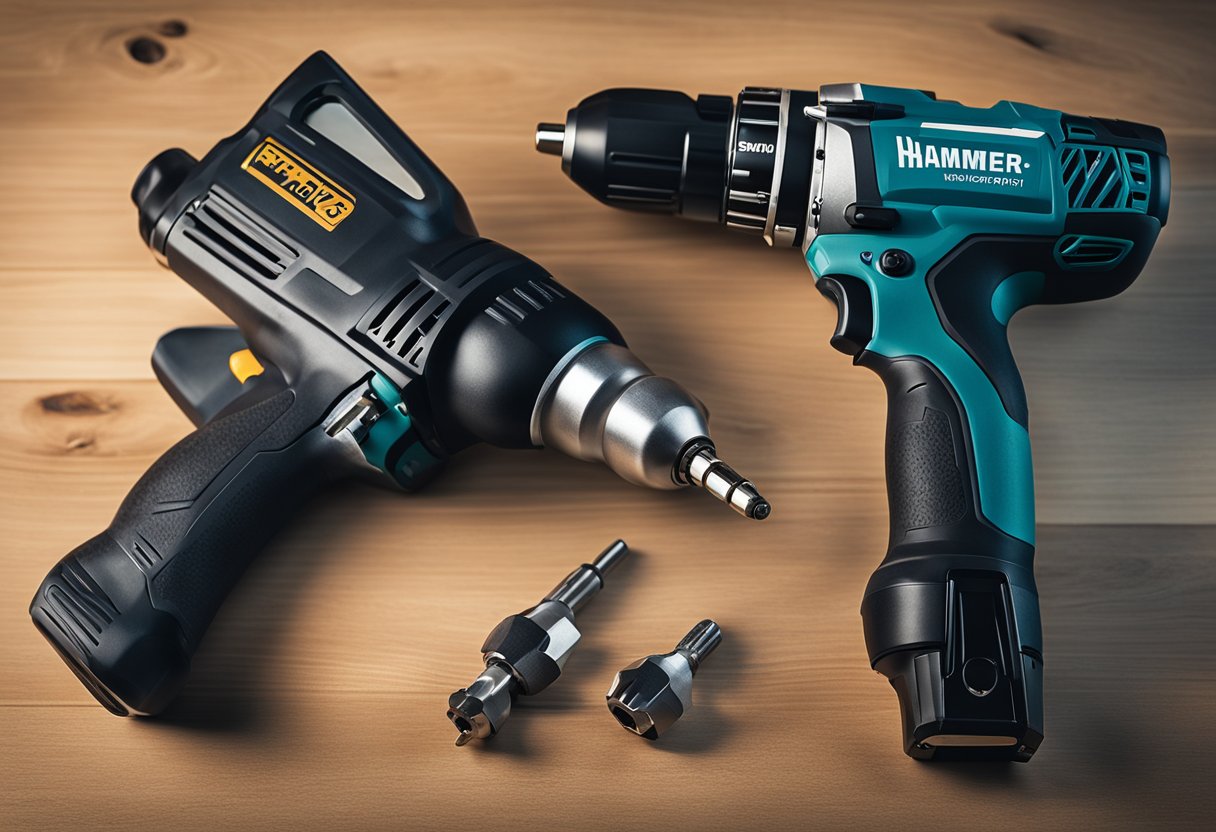As a DIY enthusiast, you may have wondered if you can use a hammer drill as an impact driver. Both tools have similar appearances and functions, but they are designed to perform different tasks. Hammer drills are designed to drill holes into hard surfaces, while impact drivers are designed to drive screws and bolts. However, in some cases, you may be able to use a hammer drill as an impact driver.
Understanding the differences between hammer drills and impact drivers is essential before attempting to use one tool in place of the other. Hammer drills use a pulsing action to drill through hard materials like concrete, brick, or stone. In contrast, impact drivers use rotational force to drive screws and bolts into different materials. While both tools can be used to drill holes, impact drivers are more efficient at driving screws and bolts into materials like wood, metal, and plastic.
Before attempting to use a hammer drill as an impact driver, it is essential to consider the functions and capabilities of each tool. While there are some similarities between the two, they are designed to perform different tasks. Using one tool in place of the other can lead to damage to the tool, the material, or even personal injury. In the next section, we will explore the differences in torque and force between hammer drills and impact drivers.
Key Takeaways
- Hammer drills and impact drivers are designed to perform different tasks.
- While there are some similarities between the two tools, it is essential to understand the differences in torque and force.
- Attempting to use a hammer drill as an impact driver can lead to damage to the tool, the material, or even personal injury.
Understanding Hammer Drills and Impact Drivers
https://www.youtube.com/watch?v=F1B56OK__R8&embed=true
As someone who is interested in power tools, you may have come across the terms “hammer drill” and “impact driver” before. While these tools may look similar, they have different mechanisms and are designed for different purposes.
A hammer drill is a power tool that is used for drilling into tough surfaces such as concrete or masonry. It works by creating a pounding or hammering motion as it rotates, which helps to break up the material being drilled. This is achieved through the use of a pair of ridged discs that move back and forth against each other, creating a forward-and-back motion as the drill rotates.
On the other hand, an impact driver is a tool that is designed to provide high levels of rotational force or twisting action. It achieves this by using a spring and a hammer to drive force into the rotating motion of the drill. This makes it ideal for tasks such as driving screws or bolts into hard materials, where a regular drill may not have enough power.
One of the key differences between a hammer drill and an impact driver is that an impact driver has a driver mode and a drill mode. In driver mode, it provides the high levels of rotational force needed for driving screws and bolts, while in drill mode, it can be used for drilling holes. This is in contrast to a standard drill, which can only be used for drilling.
Another difference is that while both tools use impacts to create their respective motions, a hammer drill uses impacts to create a pounding or hammering motion, while an impact driver uses impacts to create a twisting motion.
When it comes to choosing between a hammer drill and an impact driver, it’s important to consider the task at hand. If you need to drill into tough materials such as concrete or masonry, a hammer drill may be the better choice. On the other hand, if you need to drive screws or bolts into hard materials, an impact driver may be more suitable.
It’s also worth noting that both hammer drills and impact drivers are available in cordless and corded versions. Cordless models are powered by a battery, while corded models are powered by electricity. Cordless models are more convenient to use, but may not have as much power as corded models. Additionally, the voltage of the motor can also affect the power of the tool.
Functions and Capabilities
https://www.youtube.com/watch?v=sBRWcQeG5BE&embed=true
As a handyman, I often get asked if a hammer drill can be used as an impact driver. While there are similarities between the two tools, they are designed for different functions and have unique capabilities.
First, let’s discuss drilling. Hammer drills are specifically designed for drilling into hard surfaces such as concrete, brick, or stone. They use a forward-and-back motion to create holes, while impact drivers are not designed for drilling. Instead, they are made for driving screws and other fasteners into various materials.
When it comes to driving screws, impact drivers are the superior tool. They are designed to provide more torque and have higher impacts per minute (IPM) or blows per minute (BPM) to drive screws more efficiently and precisely. Impact drivers also have rotational impacts that help control the tool and prevent stripping screws or bolts.
While hammer drills can be used to drive screws, they are not as efficient or precise as impact drivers. They lack the rotational impacts and control settings that impact drivers have, making them less suitable for driving screws.
Another difference between the two tools is their chuck. Hammer drills typically have a standard chuck that can hold a variety of drill bits, while impact drivers have a hex shank chuck that is compatible with driver bits. This makes impact drivers more compact and powerful than hammer drills.
In summary, while both hammer drills and impact drivers have their uses, they are designed for different functions and have unique capabilities. Hammer drills are best for drilling into hard surfaces, while impact drivers are superior for driving screws and other fasteners. When it comes to efficiency, precision, and control, impact drivers are the better choice.
Materials and Applications
https://www.youtube.com/watch?v=d6amOra1qZg&embed=true
When it comes to using a hammer drill as an impact driver, it is important to consider the materials and applications that you will be working with. While both tools can be used for drilling and driving screws, they are designed for different purposes and work best with specific materials.
For example, a hammer drill is ideal for drilling into hard materials such as concrete, brick, and stone. The hammering action of the drill helps to break up the dense material, making it easier to drill through. On the other hand, an impact driver is best suited for driving screws into wood, metal, and plastic. The high torque of the impact driver helps to drive screws quickly and efficiently, without damaging the material.
When working with hardwood, it is important to use the right tool for the job. While a hammer drill can be used to drill holes in hardwood, it may not be the best choice for driving screws. A better option would be to use an impact driver, which is designed to handle the dense material and provide the necessary torque for driving screws.
For home improvement projects such as building shelves or hanging pictures, an impact driver is the best choice. It can quickly and easily drive screws into wood or drywall without damaging the material. Additionally, an impact driver can be used to install deck screws, making it a versatile tool for a variety of applications.
In summary, while a hammer drill and an impact driver may seem interchangeable, it is important to use the right tool for the job. Consider the materials and applications you will be working with, and choose the tool that is best suited for the task at hand.
Differences in Torque and Force
https://www.youtube.com/watch?v=Da2VSYitUkM&embed=true
As a DIY enthusiast, it’s important to know the differences between a hammer drill and an impact driver. One of the key differences is in the torque and force they produce.
A hammer drill produces both rotational force and blows to the material being drilled, which helps to break up tough surfaces. On the other hand, an impact driver produces a twisting force that is perpendicular to the bit, which helps to drive screws and bolts into tough materials.
When it comes to torque, a hammer drill typically has a lower torque output than an impact driver. This means that it may take longer to drill through tough materials, such as concrete or masonry. However, a hammer drill is better suited for drilling holes in these materials, as it has a hammering function that helps to break up the surface.
An impact driver, on the other hand, has a much higher torque output than a hammer drill. This makes it ideal for driving screws and bolts into tough materials, such as hardwood or metal. The twisting force produced by an impact driver is also more efficient at driving fasteners, as it doesn’t require as much force to get the job done.
In terms of force, a hammer drill produces more force than an impact driver. This is because it has a hammering function that produces blows to the material being drilled. These blows help to break up tough surfaces, making it easier to drill through them. An impact driver, on the other hand, produces a twisting force that is more efficient at driving fasteners, but not as effective at drilling through tough materials.
Overall, while both tools have their strengths and weaknesses, it’s important to choose the right tool for the job at hand. If you need to drill through tough materials, a hammer drill is the way to go. If you need to drive screws and bolts into tough materials, an impact driver is the better choice.
Advantages and Disadvantages
Using a hammer drill as an impact driver has its advantages and disadvantages. Let’s start with the advantages.
Advantages
Efficient and Compact
A hammer drill is a powerful tool that can drill holes in masonry and concrete. It is also compact and lightweight, making it easy to handle and maneuver in tight spaces. When used as an impact driver, it can drive screws and bolts quickly and efficiently.
Powerful
A hammer drill is more powerful than a regular drill, making it ideal for heavy-duty tasks. It can generate a lot of torque, which is essential for driving long screws and bolts into tough materials.
Control and Precision
A hammer drill allows for better control and precision when drilling holes. It has a variable speed setting that allows you to adjust the speed according to the task at hand. This helps to prevent the drill bit from overheating and breaking.
Value
Using a hammer drill as an impact driver can save you money. Instead of buying two separate tools, you can use one tool for both tasks. This is especially useful if you only need to use an impact driver occasionally.
Disadvantages
Heavy
A hammer drill is heavier than a regular drill, making it more difficult to handle for extended periods. This can cause fatigue and strain on your arms and shoulders.
Control and Precision
While a hammer drill allows for better control and precision when drilling holes, it can be more difficult to control when used as an impact driver. This can result in overdriving or underdriving screws and bolts.
Value
While using a hammer drill as an impact driver can save you money, it may not be the most cost-effective option in the long run. Impact drivers are designed specifically for driving screws and bolts, and they are more efficient and effective at this task than a hammer drill.
In summary, using a hammer drill as an impact driver has its advantages and disadvantages. While it can be a useful tool for occasional use, it may not be the best option for heavy-duty tasks or frequent use.
Safety and Usage Tips
When using a hammer drill as an impact driver, safety should be your top priority. Always wear appropriate protective gear such as safety glasses, gloves, and earplugs. This will protect you from flying debris, accidental slips, and loud noises.
It is also important to have the right toolbox. Make sure that you have the correct bits and attachments for your hammer drill. Using the wrong bit can cause damage to your drill and your workpiece. It is also recommended to have an impact-rated socket adapter to ensure that your drill bits fit snugly into the chuck.
When using a hammer drill as an impact driver, it is crucial to understand the variable speeds and clutch settings. Adjusting the speed and clutch can help you achieve the desired torque and prevent overdriving or stripping screws. Always start with a low speed and gradually increase until you reach the desired torque.
It is important to note that not all hammer drills can be used as impact drivers. Some hammer drills are not designed to handle the impact function and can be damaged if used as such. Always check the manufacturer’s instructions to determine if your hammer drill can be used as an impact driver.
Lastly, ensure that the clutch is engaged before using the hammer drill as an impact driver. This will prevent the drill from slipping or overdriving the screws.
By following these safety and usage tips, you can effectively use your hammer drill as an impact driver without causing damage to your tool or workpiece.
Choosing the Right Tool for Your Needs
https://www.youtube.com/watch?v=43cuU0lP6To&embed=true
As a DIY enthusiast, it’s important to choose the right tool for the job. When it comes to drilling and driving screws, there are two common tools: the hammer drill and the impact driver. While both tools can be used for similar tasks, they have different strengths and weaknesses.
The hammer drill is designed for drilling into hard materials like concrete and masonry. It uses a hammering action to break up the material and a drilling action to remove it. On the other hand, the impact driver is designed for driving screws and bolts quickly and efficiently. It uses a rotational force to drive the fastener and can handle tougher jobs than a regular drill.
If you’re working on a project that involves drilling into hard materials, like concrete or masonry, then a hammer drill is the right tool for the job. However, if you’re driving screws or bolts into wood or metal, then an impact driver is the better choice. It is faster and more efficient than a regular drill and can handle tougher jobs with ease.
When choosing between a hammer drill and an impact driver, it’s important to consider the weight of the tool. Hammer drills tend to be heavier than impact drivers, which can make them more difficult to use for extended periods of time. If you’re a DIY enthusiast who works on projects frequently, then you may want to consider the weight of the tool before making a purchase.
In summary, both the hammer drill and impact driver are useful tools to have in your arsenal. However, choosing the right tool for the job is important. If you’re drilling into hard materials, then a hammer drill is the way to go. If you’re driving screws or bolts, then an impact driver is the better choice. Consider the weight of the tool before making a purchase, especially if you plan on using it frequently.
Frequently Asked Questions
Can a hammer drill be used as an impact driver?
Yes, a hammer drill can be used as an impact driver. However, it is important to note that a hammer drill and an impact driver are two different tools designed for different purposes. An impact driver is specifically designed for driving screws and bolts with high torque, while a hammer drill is designed for drilling holes into hard materials like concrete and masonry.
What are the differences between a hammer drill and an impact driver?
The main difference between a hammer drill and an impact driver is the way they apply force. A hammer drill uses a hammering motion to drill into hard materials, while an impact driver uses a rotational force to drive screws and bolts. Additionally, impact drivers are generally more compact and lightweight than hammer drills, making them easier to use in tight spaces.
Can a hammer drill replace an impact driver?
While a hammer drill can be used as an impact driver, it is not recommended to replace an impact driver with a hammer drill. Impact drivers are specifically designed for driving screws and bolts with high torque, and they are generally more efficient and easier to use for this purpose than a hammer drill.
Is it safe to use a hammer drill for driving screws?
Using a hammer drill for driving screws is generally safe, but it may not be the most efficient or effective method. Hammer drills are designed for drilling holes, and they may not provide the same level of control and precision as an impact driver when it comes to driving screws.
Can a hammer drill be used for automotive work?
While a hammer drill can be used for automotive work, it is not recommended to use it as a replacement for an impact driver. An impact driver is specifically designed for driving screws and bolts with high torque, which is essential for many automotive applications.
What are the limitations of using a hammer drill as an impact driver?
The main limitation of using a hammer drill as an impact driver is that it may not provide the same level of control and precision as an impact driver when it comes to driving screws. Additionally, hammer drills may not be as efficient or effective as impact drivers when it comes to driving screws, which can lead to stripped or damaged screws.

Hi, I’m Sal Muller of Tooltrip.com. My DIY experience led me to understand essential power tools for home projects. Tooltrip.com guides enthusiasts and professionals in choosing right tools for any job. I provide concise top tool reviews for easier, efficient DIY.





